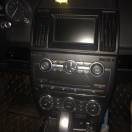中国孩子大概熟悉几百个源自拉丁语和希腊语的常用构词部件(相当于汉语中的偏旁部首)就可以轻松读懂英语原版的数学、物理、化学、生物等众多的专业教材。
强烈建议家长朋友和孩子一起利用英语原版的坎贝尔生物学开始简单快乐有趣的英语入门学习。
当然,一开始,也可以先借助汉语版的教材大概了解一些常识。
Robert Hooke FRS (/hʊk/; 18 July 1635 – 3 March 1703)[4][a] was an English polymath active as a scientist, natural philosopher and architect, who is credited to be one of the first two scientists to discover microorganisms in 1665 using a compound microscope that he built himself,[5] the other scientist being Antonie van Leeuwenhoek in 1674.
【英语】polymath[ˈpɔlɪmæθ]n. 学识渊博的人
拆解:poly+math。
注:源自拉丁语的multi-对应源自希腊语的poly-表“多”。
请家长朋友帮助孩子牢记:ma-表“妈”,math-表“学”,me-表“测量”,meth-表“甲~”,-eth表“乙~”。
请家长朋友大概了解词源:
Learned borrowing from Ancient Greek πολυμαθής (polumathḗs, “having learnt much”), first attested in 1624. From πολύς (polús, “much”) + μανθάνω (manthánō, “to learn”). Compare opsimath, philomath, polyhistor, polymathic, polymathist, and polymathy.#英语##家庭教育##记单词##专家谈粮食安全:不能光靠重资本##转基因##育儿#

